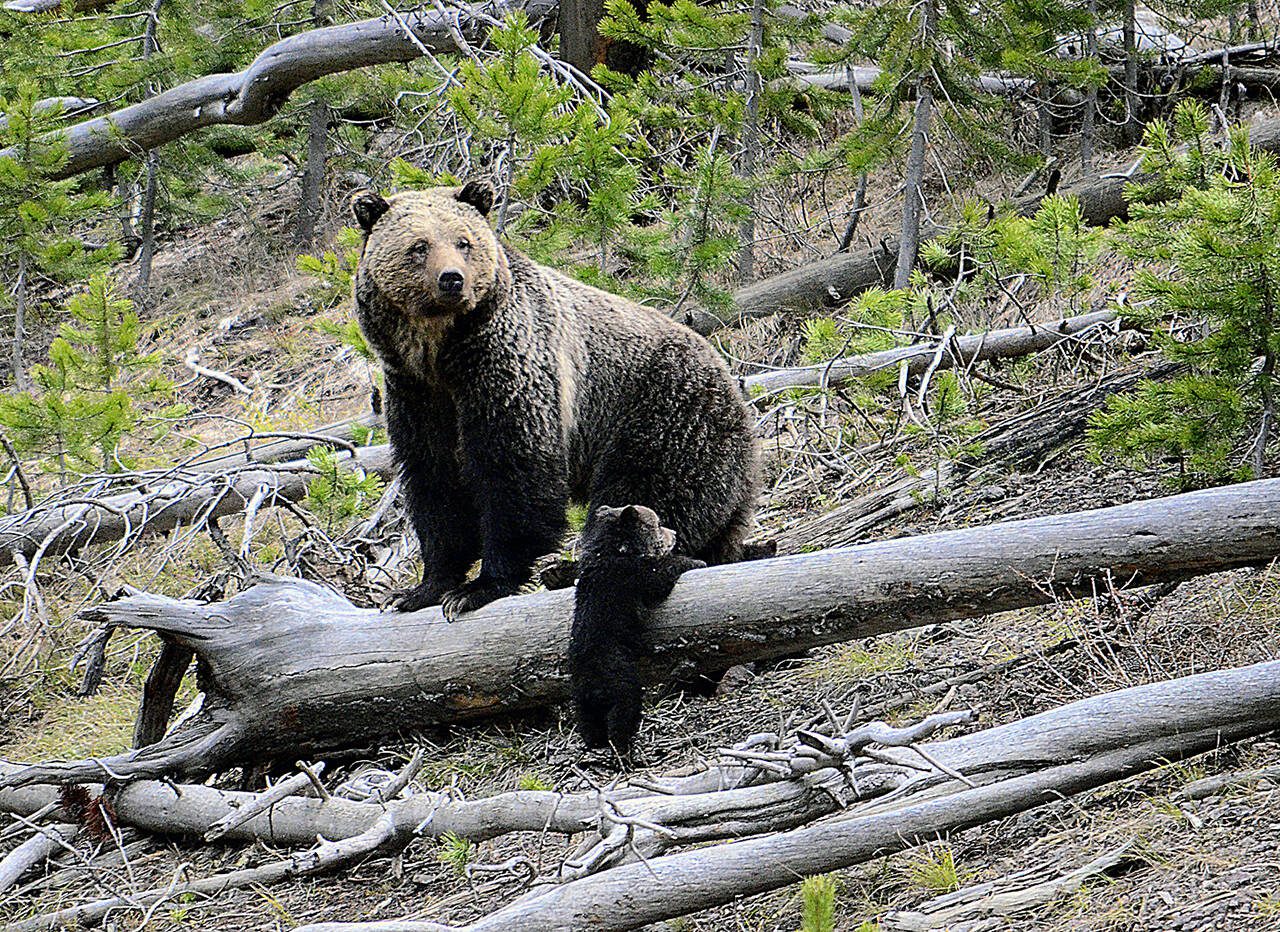By Bill Lucia / Washington State Standard
Grizzly bears could get another chance at returning to Washington’s North Cascades, under a framework two federal agencies unveiled on Thursday.
The U.S. Fish & Wildlife Service and National Park Service released a set of options to bring the hulking animals back into the area — a wild expanse of glaciated peaks, dense forests, and rushing streams and rivers.
Grizzlies once roamed the region’s rugged terrain but were decimated by hunting throughout the 20th century and none are known to be living there now.
Plans to reintroduce the bears are not final. They’re described in a 303-page draft restoration plan and environmental impact statement, which the agencies are seeking public input on before moving ahead. And one of the alternatives they’ve presented is to take no action.
“We are looking for the public’s help in selecting the best path forward as we evaluate grizzly bear recovery on these federal lands,” Don Striker, superintendent of North Cascades National Park, said in a statement.
Washington’s Department of Fish and Wildlife said it had received notice of the federal agencies’ North Cascades grizzly plans and was working with them on the process.
“We are committed to grizzly bear recovery in Washington and will engage with the federal agencies as required by law,” said Eric Gardner, director of wildlife programs for the department.
A state law prohibits Washington wildlife managers from transplanting or introducing grizzlies in the state.
The last confirmed North Cascades grizzly sighting in Washington was in 1996, near Glacier Peak. A bear photographed in 2010 on the popular Sahale Arm trail was thought by some to be a grizzly but may have been a large black bear with a pronounced shoulder hump.
Study and debate over restoring the region’s grizzly bear population goes back over two decades.
The Fish & Wildlife Service officially declared a grizzly recovery zone in the North Cascades in a 1997 planning document, and along with the National Park Service began a process in 2015 to analyze how to restore the bears in the region.
In 2020, the Trump administration halted a grizzly restoration plan for the area amid opposition from ranchers, farmers, and others. Environmental advocates sued in response. The Biden administration last year restarted the process of studying North Cascades grizzly recovery.
The latest plans won praise from conservation groups.
“I’m delighted to see that a plan to restore grizzly bears to the North Cascades is moving forward,” said Andrea Zaccardi, carnivore conservation legal director at the Center for Biological Diversity, which filed a lawsuit against the Trump administration over rescinding the earlier grizzly plan.
But the proposals to bring back grizzly bears to the North Cascades will also stir controversy.
U.S. Rep. Dan Newhouse, a Republican who represents Washington’s 4th Congressional District, which encompasses parts of the North Cascades region, is a past critic of reintroducing the bears in the area.
He said in a statement Thursday that, “The National Parks Service and Fish and Wildlife Service should end this process immediately.”
“Time and again, our communities have spoken to express staunch opposition to the introduction of these apex predators, which would be detrimental to our families, wildlife, and livestock alike,” he added.
The draft plan and environmental impact statement include two options for reviving North Cascades grizzlies. Both involve releasing three to seven bears annually over five to 10 years. The goal would be to establish an initial population of about 25 bears.
In the long term, the target would be a population of about 200 bears established within 60 years to a century. Past research indicates that the state’s North Cascades region could accommodate about 280 grizzly bears.
The two options differ when it comes to the guidelines for managing the bears. With the “preferred alternative” the agencies have put forward, management would be guided under what’s known as section 10(j) of the Endangered Species Act.
In short, this section of the law is supposed to allow for greater flexibility in managing animals, including in situations where they have conflicts with people.
For example, livestock owners in certain areas, under specified circumstances, and after getting government approval, would be allowed to kill grizzlies that attack or threaten livestock.
And people would be free to “haze, disrupt, or annoy” bears that approach homes and other structures.
Hugh Morrison, U.S. Fish & Wildlife Service regional director, said the 10(j) designation could provide a way to return grizzlies to the region “in a way that ensures communities, property, and the animals can all coexist peacefully.”
The Section 10(j) proposal is outlined in an 88-page rulemaking the Fish & Wildlife Service issued Thursday separate from the environmental impact statement.
There are about 2,000 grizzly bears spread across pockets of the West outside of Alaska.
In the 19th century, there were an estimated 50,000 in the U.S. But their numbers dropped into the hundreds by the 1930s. They were listed as a threatened species under the federal Endangered Species Act in 1975 and retain that designation in the lower 48 states.
Public comment on the latest North Cascades grizzly bear plans is open until Nov. 13. More information can be found here.
Washington State Standard is part of States Newsroom, a nonprofit news network supported by grants and a coalition of donors as a 501c(3) public charity. Washington State Standard maintains editorial independence. Contact Editor Bill Lucia for questions: info@washingtonstatestandard.com. Follow Washington State Standard on Facebook and Twitter.
Talk to us
> Give us your news tips.
> Send us a letter to the editor.
> More Herald contact information.

























